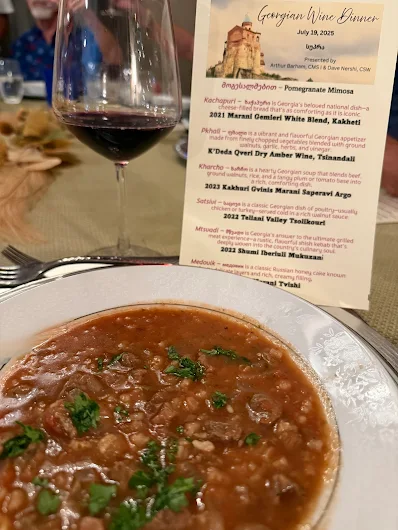Friuli Venezia Giulia is a compact yet captivating wine region nestled along Italy’s northeastern border with Slovenia. The complexity of its wines stems from a unique interplay of Alpine and Mediterranean influences—cold winds from the Alps lend high acidity, while coastal breezes bring salinity and body.
The Social Soul of Friuli Wine Culture
Wine is woven into Friulian life, and few bottles speak its language more eloquently than Broy DOC Collio from the historic Collavini Winery, founded in 1896 in Rivignano. First crafted in 2003, Broy is a white blend of 50% Friulano, 30% Chardonnay, and 20% Sauvignon Blanc—an elegant trifecta that reflects the region’s terroir and winemaking philosophy.
Tracing the Broy Timeline
At a recent online tasting, I had the privilege of sampling six vintages of Broy, each illustrating a distinct era in its evolution. According to Luigi Collavini, great-grandson of founder Eugenio, the wine has seen three stylistic phases:
- 2003–2008: A bold, powerful white wine
- 2008–2018: A focus on purity—“less winery and more vineyard”
- 2018 onward: Introduction of barrel aging and a new label
Let’s take a stroll through each vintage.
2022 Vintage
The growing season was highlighted by drought and an early harvest. The lack of rain caused some trees to die. Hot winds signaled the reality of climate change. Irrigation in Friuli is only used in emergencies and only in the valleys. Luigi likened irrigation in the vineyard to doping in sports.
In the glass, the wine is a straw yellow color with golden highlights. On the palate, notes of tree fruit and pineapple are present. The wine gets nine months of oak aging, but it is done with finesse. The wine is elegant and balanced with an engaging minerality.
2021 Vintage
This year had a more typical season, with a cool spring and some frost. This edition of Broy offers more acidity while maintaining good balance. The vineyard soil was once a seabed, and that adds beautiful minerality. Salinity, a trademark of Broy, is also evident.
The wine is complex, and the fascinating aroma weaves together wildflowers, spice, and peach. It is creamy and round, lifted by bright acidity. The palate offers apricot, honeyed peach, and flint. This wine, a favorite with critics, delivers elegance with a flourish.

Luigi Collavini - Photo courtesy of Collavini
2018 Vintage

“Revolutions are very welcome,” Luigi says, referring to this vintage, which introduced barrel aging to the Broy line. Growing conditions were perfect, and the crop was more abundant than in previous years.
The color is a rich golden yellow. The aroma is a layered bouquet of ripe peach, mango, and a touch of banana. The barrel aging is done in a restrained Burgundian style, present but not obtrusive. The palate opens with juicy peach and tropical fruit, followed by some salty mineral notes and vibrant acidity, leading into a lingering finish.
2017 Vintage
The harvest season was warmer than average, with the overall crop reduced by 20%. The last vintage before the introduction of the barrel-aging regimen, this wine tasted very different than the newer vintages. Stainless steel finishing resulted in a focus on freshness and minerality.
The wine, eight years on from harvest, is deep gold in the glass. It tasted more austere and focused, contrasting with the opulence of the 2022 and 2021. The tropical notes were more muted with a mineral-driven leaness. This was a wine that looked suspect when I received the shipment due to a moldy-looking cork. However, the wine inside was fine, and this turned out to be one of my favorites.

Collavini vineyards and winery - Photo courtesy of Collavini
2013 Vintage

My 2013 vintage bottle was faulted, not surprising when you are tasting a white wine that’s 12 years old, shipped halfway around the world. (Collavini was kind enough to send another bottle, but it didn’t survive the shipping process.)
Fellow participants enjoyed the candied fruit and savory flavors of the wine, which still maintains its structure and minerality.
2011 Vintage
The 2011 vintage began with temperatures above average. The summer was characterized by cool and humid weather, interrupted by a brief period of intense heat. The harvest season was warm and dry.
A deep golden color captures your attention before the first sip. The aroma is of tropical fruit and flint, hinting at aged elegance. The palate has deep savory notes, including tart apple, dried herbs, and sweet spice. This is a wine to sip and contemplate while enjoying the surprising freshness of a 14-year-old wine.
My first tasting experience with Collavini’s Broy made an indelible impression. The wine is rich, aromatic, and complex. Decades may come and go, but the elegant Broy DOC Collio remains a benchmark in Friuli wine.



.png)





















